The Transformative Powers of Monstrosity – A List Of Body Horror Films With Trans Allegories
In the spirit of Halloween, here's a list of body horror films which can be interpreted as trans allegories.


Mariama Diallo’s directorial debut Master is a haunting exploration of White Supremacism and institutionalized racial “insurance” to be found in seemingly progressive policies. The genre she’s chosen to talk about the targeting of students and teachers of colour by the white people on campus is horror and it plays out perfectly. The first thing that came to my mind when I read about it and even more so after watching, is Jordan Peele’s Get Out. That was another bold directorial debut about White Supremacism which used horror to drive the point home. I’ll discuss the thematic parallels and the differences in execution later in details. I brought it up because it’s a prime example of how horror often says what drama can’t because it works even in the spaces when drama doesn’t exist since the horror elements are atmospheric rather than verbal or visual.
Master follows freshman Jasmine Moore (Zoe Renee) and newly appointed master of Belleville House at Ancaster College, Gail Bishop (Regina Hall) as they have strange and often extreme experiences during their time at the college. Ancaster College is predominantly white, and this is abundantly clarified by the staff and the students. The college is very proud of the first ever black house master and the director and other house masters keep stressing about how this is a major step ahead, including making a joke about how they could call her “Barack”. If that sounds harmless, one must realize one wouldn’t call any potential presidential candidate, Lincoln or Kennedy. It’s very obvious that Ancaster is literally interested in coming across as progressive and inclusive than being actually inclusive. The lack of diversity sensitization amongst the characters brings me to that conclusion.
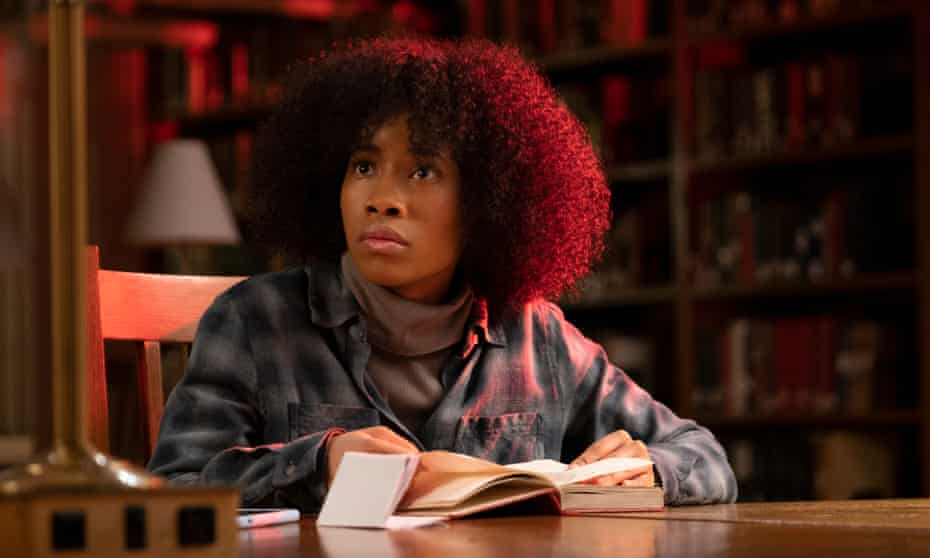
The only other black professor on campus is Liv Beckman (Amber Gray) and she becomes a source of solace for Gail. She is also however very clear on the lack of sensitization but also painfully passive. She doesn’t seem to be exhausted of her life but she’s very obviously come to terms with the fact that her place is not one to bring about change but to do her best by her students within the confined space she’s provided. It’s interesting that there’s no malice anywhere and all the professors are respected, but Gail is basically a prized possession to the board rather than a source of meaningful contribution. No one profiles her but they unnecessarily congratulate her or acknowledge her very differently than they do their white colleagues.
And this is essentially profiling too because it’s about different treatment whether the treatment is in the form of positivity or negativity. And I think this is a very important inclusion in the traits of the people in Ancaster’s board because often this subtle racism is not understood to be racism since it’s special treatment, but being constantly reminded that you’re “other” is not special, it’s discrimination! In fact, the opposite is Jasmine’s story. She’s once profiled against by none other than Liv who claims it’s understandable that Jasmine will have problems adjusting to the new school because she’s different and comes from… The sentence stays incomplete because Jasmine interrupts her to clarify she’s from Tacoma and this is definitely a problematic way of being addressed. The juxtaposition of Gail and Jasmine’s stories actually help clarify for the audience that whether done through politeness or through insult, racism is racism.
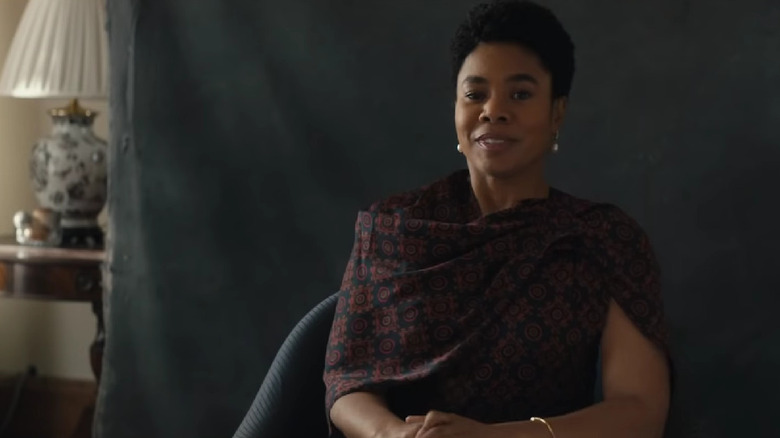
The horror element is introduced gradually into the story and apart from a nightmare, there is barely anything visually horrifying in the first half of the film. There’s a myth about a witch Margaret Millet who died nearby after standing trial for being a witch and then burnt. There’s a rumour running amongst the students that every year, a freshman is picked off by Margaret to be killed. And on top of that, Jasmine and her roommate Amber (Talia Ryder) share a room whose occupant from the 60s killed herself. Jasmine’s research reveals she was the first black student of Ancaster College and since that moment the malice starts rearing its ugly head. Again, it’s rather subtle as opposed to the horrendous stories like those of Brianna Taylor or George Floyd, may their souls rest in peace. For example, the black woman who serves lunch is very amicable with the students but treats Jasmine rudely, and the librarian pushes her boundaries after the exit gate beeps when she passes through it, which is a recurring thing for her despite no discrepancies in the library paperwork.
That beeping gate is the first of the racist supernatural occurrences. There are Jasmine’s nightmares, the almost targeted presence of maggots at Gail’s house, a practical joke with a noose on a rope hung on a doorknob, and a few phenomena that cannot really be explained but are clearly having racial undertones. It’s like racial discrimination is woven into the very fabric of Ancaster, a part of its identity. In fact, the horror is more in the environment and the mood of the film rather than from actual jump-scares (till the end because there are a few in the second half), to portray how the history and the “legacy” of the place matters more to its people than the people in it themselves. And how the racism there is also indirect and through actions rather than through verbal exchanges or tangible profiling. No important character in Master is male or from a different social class so the only subject under focus can be the discrepancy due to race and I love that touch from screenwriter Diallo.
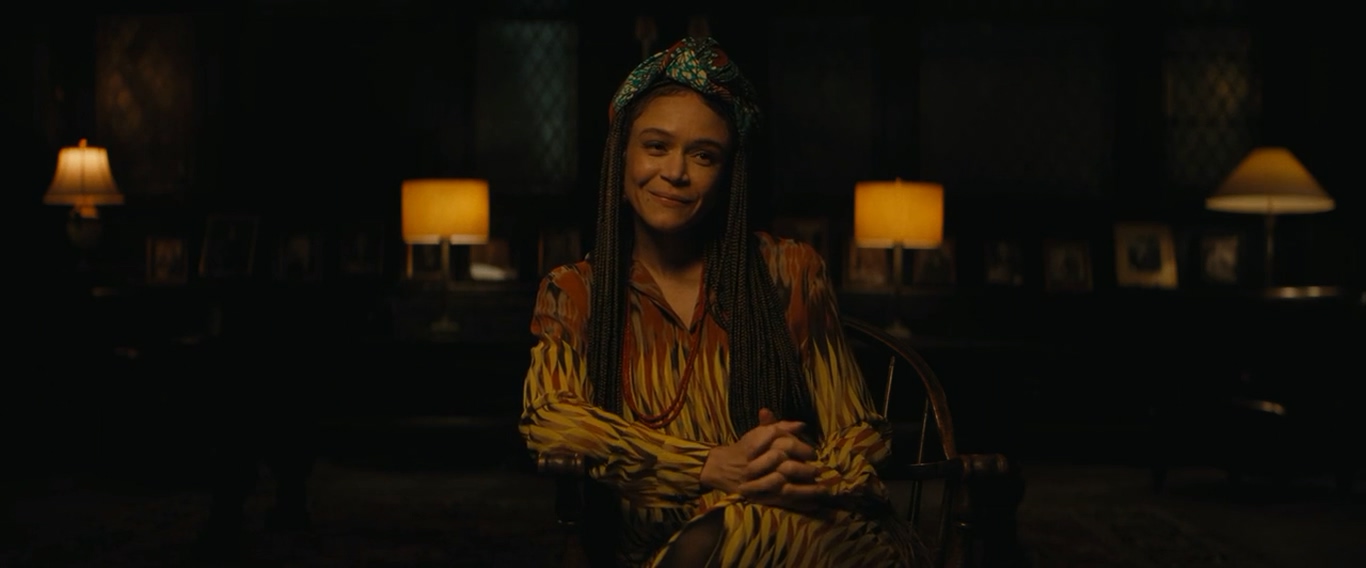
It’s in that nerve of the racism being literally woven into the fabric of the setting that Master reminds me of Get Out. Jordan Peele’s film was definitely more jarring, especially in the third act, but I think Master’s lack of theatrics gives it its own powerful flavour. Instead of being about the horrendous behaviour of White Supremacists, Master is able to speak to the way mental health deteriorates because of the environment. Unlike having gore or intense altercations like in Get Out, Master has moody moments with dim lighting, distorted visions, and nightmares, thus making the horror more implicit than explicit. That’s how it focuses more on the personal side and the mental health of the black people rather than on the location or the misplaced perceptions of the white people.
Charlotte Hornsby’s camera is a major contributor to the atmospheric horror in Master. Slow zoom-ins are used in introducing almost every scene where Gail or Jasmine are alone or rather not doing a group activity even if where they are is crowded. This is essential for Master because by zooming in slowly on the subject, the overbearing weight of their environment on them becomes clear to us, and their perspectives become accessible to the viewers. It’s also a visual nod to the way the characters feel like they’re under scrutiny all the time. Then there are tracking shots from behind, which is mainly for Jasmine because she’s the one who has nightmares and is part of the action while Gail is more subject to a disconcerting atmosphere within rooms, created entirely by awkward white peers who don’t know how to talk to her. With Gail, the camera interestingly features a lot of close-ups. It’s most notable when her stance is contradictory to some white person or people in the scene, in which case they are shown in a frame where all of them are visible, to clarify that Gail is indeed under political attack, but very subtly so. And on the other hand, when she’s being complimented or uncomfortably heralded on racial grounds, to convey the lack of open conflict, the camera becomes impersonal with the frames selected including every person in the scene along with Gail.
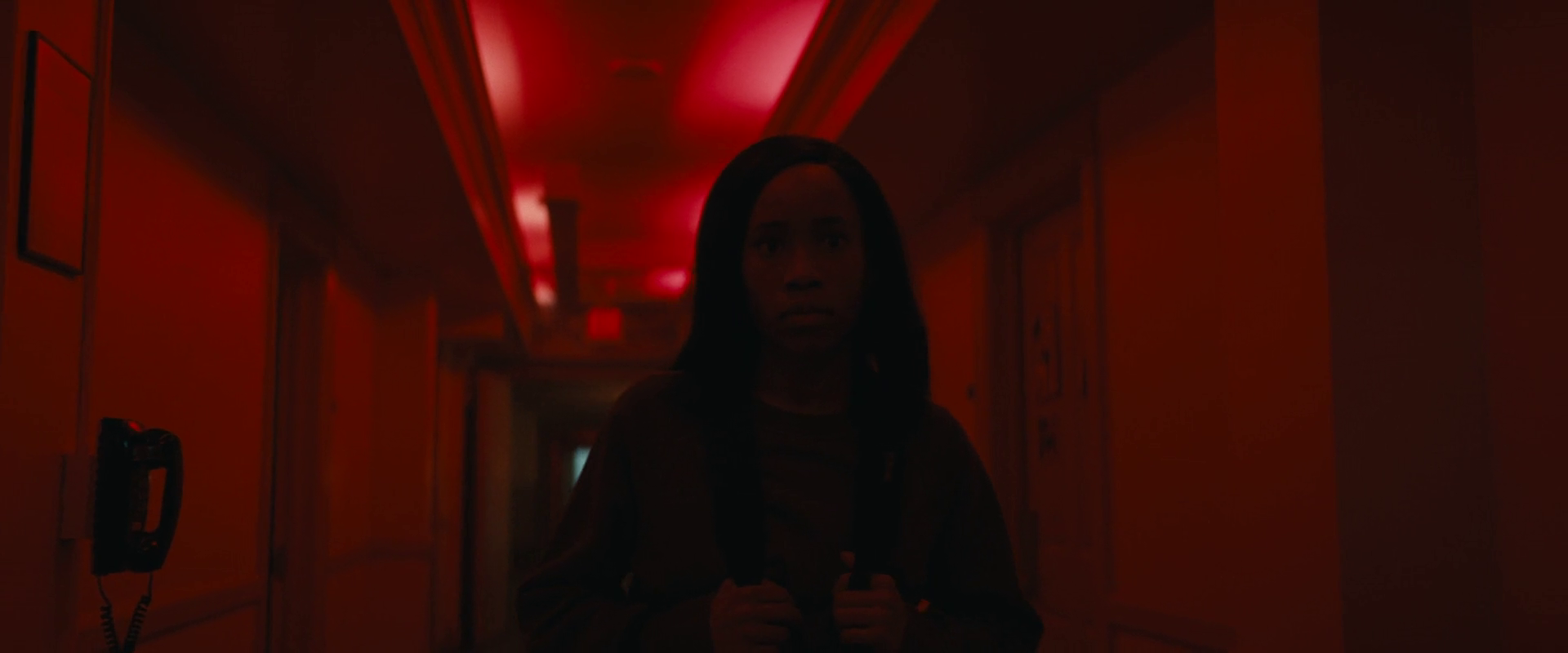
Regina Hall is phenomenal! She plays Gail with composure while developing cracks that gradually grow over the course of the film to give way to an explosive concluding monologue and a brilliantly poignant final shot. Master is a psychological work of horror. Regina Hall’s performance slowly increases in the physical discomfort she expresses through her body language under the surface of the smile she so elegantly fakes when in company, physically conveying the psychological nature of the horror and helping the viewer grab on to the mood of the film. Zoe Renee’s Jasmine is more expressive than her as the counterpart who experiences the more direct kind of racial discrimination like being subject to pranks and this seamlessly blends into the apathetic and inactive world of Ancaster. Both as a contrast to Gail and also as a representative of young adults. Her terror can be read on her face and she doesn’t hide her disdain or disappointment from the world.
Diallo’s screenplay is one of the finest on the subjects from modern Hollywood, and I love the structuring where dream and reality blend because of the common setting. The trauma of the characters fill in the empty rooms and dark corridors and that creates the horror. There are innumerable parallels between Gail and Jasmine including right from the start when each enters their new living quarters at Ancaster at the start of the semester. And then there’s the dialogue. There are a few conversations in Master that are essential for everyone to hear, especially the one about Jasmine’s adjustment issues which I referred to earlier. Another noteworthy inclusion is Liv’s confrontation with the board where she claims it’s irresponsible for scrutinizing her tenure application with such rigour instead of not being passionate about trying to investigate who is terrorizing Jasmine. And finally, the twist about Liv and the shocking truth about reality that it suggests. I love the ambiguity about that story, and I think anyone who enjoys pondering about basic human truths will be interested in its handling.
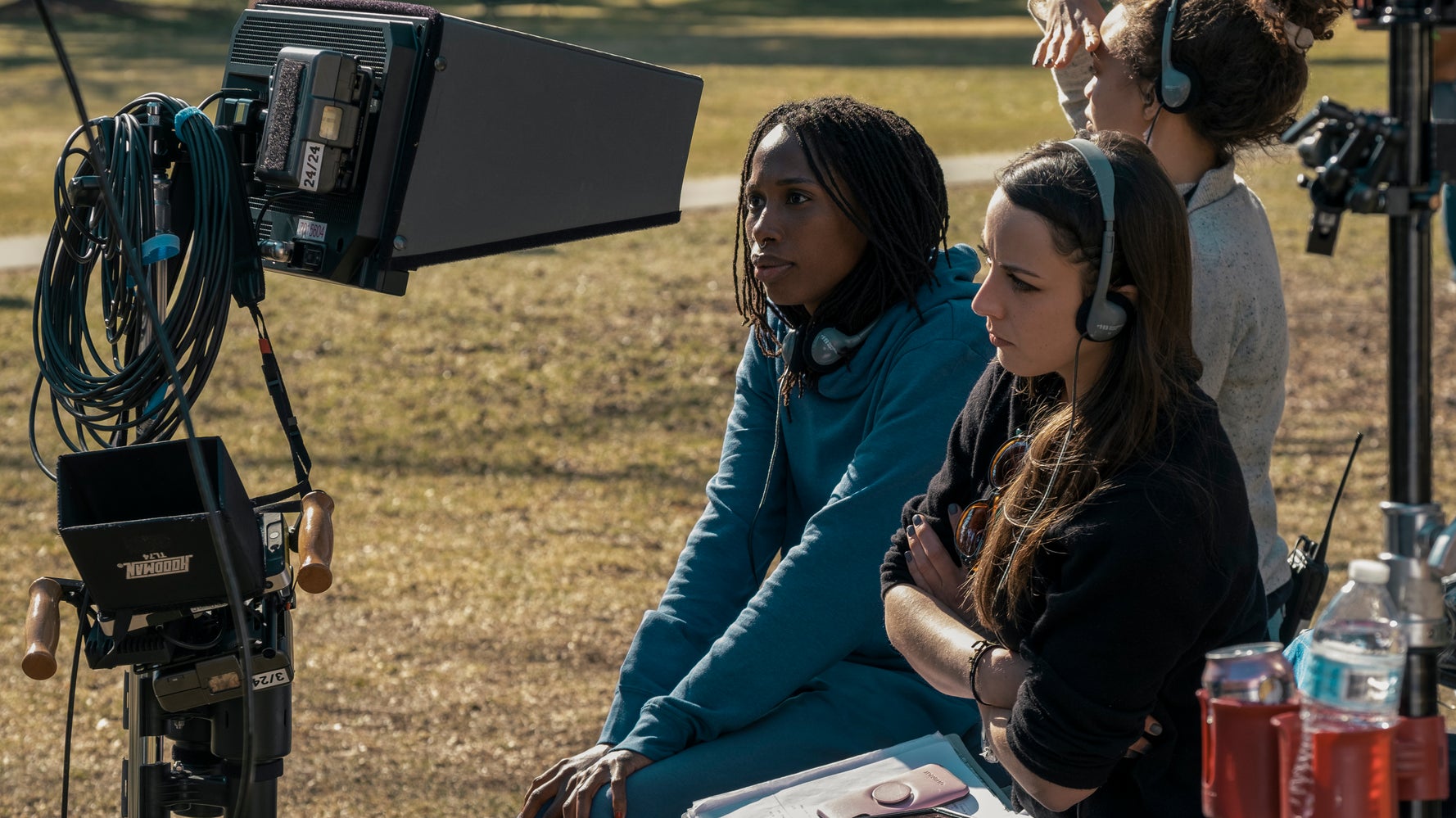
Miriama Diallo’s direction is definitely the highlight, including her screenplay. She is obviously very dedicated to the project and feels a connection with the story which elevates the sense of honesty about the film. Often with drama, things seem to come across as exaggerated, or dialogue seems to be preachy, but if horror is used properly, it can frighten the mind of the viewers to put them in the place of the people whose lives are horrifying on a daily basis. Especially more effectively so than drama because the vibe of horror works on the audience even in scenes which aren’t dramatic and that’s why my favourite thing about Master is the choice of the genre. It could easily have been made a dark comedy or a tragedy but using horror, it explored how racism is essentially a part of the culture and how no one is really free from it. In fact, why everyone must see Master and what seemingly fuels it can be perfectly summed up through this quote from the film:
“It’s not ghosts. It’s not supernatural. It’s… It’s America. And it’s everywhere.”
Related lists created by the same author
In the spirit of Halloween, here's a list of body horror films which can be interpreted as trans allegories.
Related diversity category
The coming-of-age story that brings viewers into the world of Broadway, New York City, with musical talent and LGBTQ leads.
Related movie/TV/List/Topic
A musical adventure that young viewers will enjoy as Blue and Josh travel to New York City for a big opportunity.